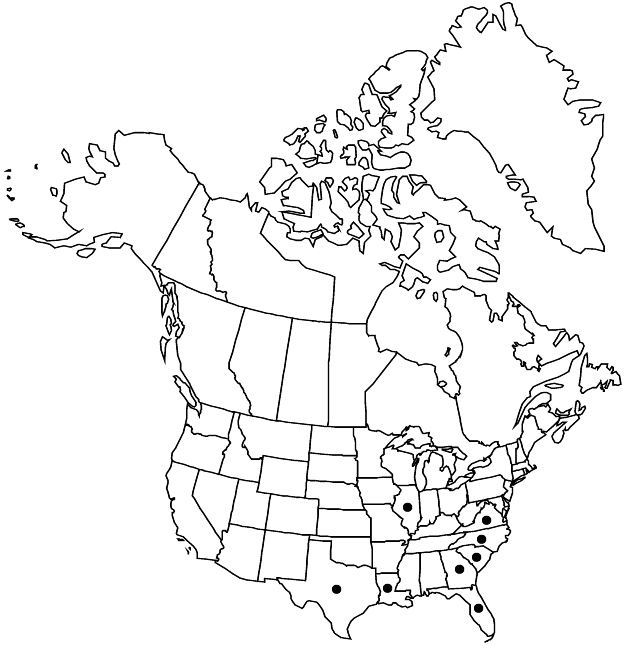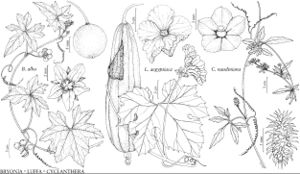Luffa aegyptiaca
Gard. Dict. ed. 8, Luffa no. 1. 1768.
Vines climbing or trailing to 15 m; tendrils 3–6-branched; stems not angled, finely hairy or glabrous. Leaves: petiole 2–15 cm; blade dark green, ovate-cordate, (3–)5-lobed, 6–20(–30) × 6–25 cm, lobes triangular to ovate, margins entire or sinuate to sinuate-toothed or sublobulate-dentate, apex acute-apiculate, surfaces scabrous. Staminate racemes (5–)15–20-flowered, 12–35 cm; peduncles and pedicels erect to spreading. Flowers 5–10 cm diam.; hypanthium 4–8 mm, sepals longer than tube; petals bright yellow, 25–45 mm, apex shallowly obtuse to obtuse-apiculate; stamens (3–)5; filaments 6–8 mm. Pepos cylindric, not angled, (6–)20–50 × (2.5–)6–10 cm. Seeds dull black, not beaked, 10–12 × 6–8 mm, surface smooth, glabrous, margins with wings ca. 1 mm wide. 2n = 26.
Phenology: Flowering Aug–Oct.
Habitat: Gardens, fields, trash heaps, cultivated in home gardens, abandoned plantings
Elevation: 10–100 m
Distribution

Introduced; Fla., Ga., Ill., La., N.C., S.C., Tex., Va., Asia (India, Pakistan), introduced also in Mexico, West Indies, Central America, South America, elsewhere in Asia, Africa, Pacific Islands, Australia.
Discussion
The later name Luffa cylindrica, incorrectly attributed to (Linnaeus) M. Roemer, has been widely and erroneously applied to L. aegyptiaca.
Selected References
None.
